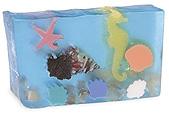http://prezi.com/tq_4ud-rokma/information-architecture/
Just experimenting some more with Prezi. Been meaning to try to explain I.A. more in a simpler way. I’d like to go back and apply a metaphor to this.
Exploring collaborative leadership & social learning to build an innovative workplace…. 2 parts knowledge and inquiry, 2 parts plan, 2 parts sub and pop culture, 3 parts fun (including what the suits call execution).
http://prezi.com/tq_4ud-rokma/information-architecture/
Just experimenting some more with Prezi. Been meaning to try to explain I.A. more in a simpler way. I’d like to go back and apply a metaphor to this.
I’m still working on this and probably will have more comments on this subject, but as I was watching all the ‘utopian’ videos I thought about Arthur C. Clarke’s third law & wondered how advanced does technology have to be for it to appear to be magic to me. This started me thinking: how much has technology developed since I was born.
By the way I admit, I’m no graphic artist and I put this together in less than 30 minutes using Google Docs. It’s my way of sketching because I can’t draw 🙂 Also, I’m not claiming that this timeline is historically precise or accurate, after all it’s based from my memory.
Click on the image to see an easier to read version
I finally had the opportunity this past week to focus on preparing this presentation for Slideshare. A co-worker and I presented this at TCC (Technology, Colleges, and Community) this Spring 2011. By the way, TCC is one of the best examples I’ve found of a truly well-run virtual conference, and it’s worth much more than the very inexpensive price of admission.
Of all the projects, I’ve worked on in the past year, I really enjoyed working on the Education Award resource the most. It was the labor & efforts of a great team of truly creative people who helped put it together. Also, it’s a good example of how good content can be developed around learning objectives while meeting user needs and user-centric design principles. This was one of the first projects where I was able to use “Paper Prototyping” to help validate the appropriateness of a web design for both user-friendliness and solid information architecture design.
I’m hoping to be able to record a mp3 recording to apply to the Slideshare soon, but in the meantime, you can view the slide notes and a rough script of this presentation in Slideshare in the “Speaker Notes” tab.
I’ll admit the idea of telling people what you were doing at any given moment did not appeal to the side of me that adores my privacy. Also, being involved in conversations with others that absobed so much chatter didn’t spark the curiosity of that extremely methodical part of me.
Yet the side of me that has come to appreciate “Stream of Consciousness” really gets it.
But after first joining Twitter I can see what people like about it.
A few tricks I learned quickly to reduce the noise factor on twitter:
I’ve actually learned a lot this weekend on Twitter. Sorry to go off on a tangent, but I get this way when I learn a good deal of new and fascinating stuff. I saved a search for Arduino technologies because I’ve very interested in learning how to make clothing and knitwear use electronic features using the Arduino Lilypad.

Can you imagine having a purse that’s hooked up to your cellphone so that it blinks a certain way when different people call? I’d also like to make some kind of garment (even just wristbands) for my brother that plays different sounds. He’s a musician that tries to bring traditional and non-traditional sounds and instruments together: OO-Ray. I was searching through Make.com’s site and found some very fascinating applications with Arduino tech including this Fabric Synthesizer. What a wonderful way to showcase ingeniuity and creativity.

Art and textiles meet electronics and music
TCC Worldwide Online Conference is a virtual conference for online educators. The global team that puts this conference together has proven yet again that it is possible to effectively run a virtual conference. Each year their preparation and translation of face to face activities into rich virtual experiences improves. I highly recommend this conference to anyone in education who wishes to glean from the pioneering experience of those in online distance learning. For the next few days, I will try to include my notes from the talks, papers, experiences and demonstrations that I thought were most valuable.
———————————————
Rebecca Meeder, Educational Technology, University of Hawai’i at Manoa, USA,
This was an excellent presentation/sharing. Rebecca Meeder provided a terrific introduction into the world of video blogging and how educators from elementary, secondary and higher education.
Importance of Video Blogging- Rise in educators who are using this medium.
<My note: students are using this medium to interact and communicate with each other>
Some Questions for Research
Some resources with data:
Examples of Educational Video Blogging:
Teacher gave weekly updates on what his students were doing in the classroom. Teacher shot from ‘nose-down’ to help students maintain their privacy.
http://speakingofhistory.blogspot.com/
Teacher has students to set up audio blogs where he podcasts on class materials. Students can comment on podcasts and interact. Note: this method can be applied to video blogs as well.
Privacy and Identity à Teacher made sure that students used pen names.
Video blogging for ESL students in Japan. Uses videos from himself and other video bloggers to instruct students in English language… exposes the students to what English speakers sound like and also expose students to American culture.
Johnny Goldstein: http://jonnygoldstein.info/bx21
Another prominent video blogger. Taught over 100 Bronx highschool students how to video blog and share things from their varied perspectives.
http://www.youtube.com/user/mwesch
Mwesch (Mike Wesch). Had his students create video blogs… do an ethnography. They got a lot of responses from other on their experiences with video blogging.
Check out the video from this site “A vision of students.”
Good Practices for Video Blogging:
An internet video mashup is just a re-mix of of video and audio content which is shared on the web.
Future tense has a great brief podcast on the trends of video mashups (1/3/2008). Notably it features the idea that much of the re-mix of content from films and music may eligible for ‘fair use‘ law protection. This makes sense since re-mixing content to express a new or different interpretation doesn’t mean that people are using the content as it is for ones own gain. This is a potentially touchy topic because on one hand we want people to re-mix and re-interpret content because it facillitates change and progress; on the other hand, taking and using content from those who worked hard to create it doesn’t seem right if someone else profits from it. Though I doubt that anyone has made any money re-mixing Soprano episodes.
Though I wonder how many legal departments and copyright lawyers must have their wheels running on overdrive right now trying to figure out how to nip this movement in the bud. Is it too late to do that? Large numbers of teens have made re-mixing of content to their own interpretations a way of life. This is simply how they react to the content they see. I think it’s exciting… because you can interact with this content in ways that you could not in the past.*What does this mean for copyright law in the future?
Rate yourself as a gamer (1.0, 2.0, 3.0 or 4.0). Presented via Karl Kapp’s blog. Click on the image below to get to the post and read more about the Game Rater. You can evaluate what level of “Gamer” you fit into regardless of your age.
This activity was developed by his students, and they did a really good job of putting an old familiar activity (assessment tool or quiz/survey) into an interactive format.
As I explored this game/interactivity, I started to realize that there are some tech tools and processes that I feel comfortable with and some that I do not. I’m getting use to accessing information via small screens, and I think that like, Josh, I feel hindered when I cannot access information online. It makes me think… there must be growing groups of people out there like Josh who will avoid ‘non-connected areas.’ I start thinking of connected people or, in this case, ‘technocrats’ as types of fish who decide to school only in ‘wireless-friendly’ areas.
Are some of us adapting our lives to technology? I guess this has happened with just about everything we’ve become used to including, cars, radios, televisions, and p.c.’s.
I’ve been looking for a better snapshot of what technology consumership look like. The Pew Institute released an interesting study which identified 10 different types of consumers of internet and technology. These types were determined by the possession, use and activity of technology assets (mobile devices, computers, cell phones, internet connection, etc.). At the top of the list “Omnivores” (8% of the surveyed) could be characterized by having a lot of gadgets and subscribing to many services. These individuals frequently participate on online social networking and expressing themselves via blogs, website authorship, etc. In contrast, the “Off the Network” people did not have cell phones or internet connectivity (15%)
These types were labeled as follows:
Elite Tech Users ( 31%)
- Omnivores
- Connectors
- Lackluster Veterans
- Productivity Enhancers
Middle of the Road Tech Users (20%)
- Mobile Centrics
- Connected But Hassled
Few Tech Assets (49%)
- Inexperienced Experimenters
- Light But Satisfied
- Indifferents
- Off the Network
More on technology and internet usage:
 Well, the first thing I thought was… Susie doesn’t want to go into IT, because most IT jobs are being outsourced, but seriously, many girls are not considering careers in technology or are tuning out from subjects dealing with technology simply because they perceive the world of tech and computers as being the Realm of the Nerds (Not all girls feel this way; obviously I don’t). At least some of the literature on tech ed for females asserts that the nerd factor is a deterrent for female interest in tech, mathematics and science fields.
Well, the first thing I thought was… Susie doesn’t want to go into IT, because most IT jobs are being outsourced, but seriously, many girls are not considering careers in technology or are tuning out from subjects dealing with technology simply because they perceive the world of tech and computers as being the Realm of the Nerds (Not all girls feel this way; obviously I don’t). At least some of the literature on tech ed for females asserts that the nerd factor is a deterrent for female interest in tech, mathematics and science fields.
I recently ran across this paper from California State University that addresses girls lack of interest in tech. According to the author’s research boys are more likely to be found working with computers than girls and parents of boys purchase computers for their children more than parents of girls? More, girls still tend to think of technology fields and subjects as more of a masculine domain. It seems to be a backward assumption, but statistics are telling us otherwise.
So what do we do to reverse this trend of girls’ lack of interest in science and tech?
I liked what this paper has to say about getting girls more engaged in technology projects, or simply that teachers and educators should appeal to what many girls are interested in their early adolescent and teen years like building relationships and social networks: “Technology production and broadcasing via blogs or podcasting, offers effective ways for girls to express themselves creatively.”
I can see or imagine the following activities:
More, I can see where the parents or educators who lead these activities need to structure them so that they are team dependent activities. Honestly, I think kids today have a leg up on understanding how to work more effectively in teams than we did. Perhaps all those reality T.V. shows that focus on team competition and activities are actually worth something. I’m not sure the Baby Boomer and Silent Generation teachers really understood how to teach team or group activities effectively. I remember having teachers that would avoid group learning because they really preferred sitting up in front of the classroom and lecturing.
Additional Resources for Getting Girls Engaged in Tech/Resources for Science Ed for Women:
My mind map for “Engaging Girls in Technology”
I hate the fuss over Christmas. I like giving gifts, but I don’t like the drama or hassle that comes tied in guilt and knots when it comes to holiday giving. My solution= find a place on the internet that I’ve visited this year either on the internet or in ‘real life.’ More, I have to have absolutely loved the products I found there. Funny, everywhere I go now, if I like a store or business I always ask stores if they have a website, and if I can purchase their products online. It’s a really good way for businesses to keep tourist dollars coming even after the tourists have gone home.
 When we were in Madison, WI this summer we went to visit the Soap Opera. I fell in love with their homemade glycerin soaps (Primal Elements Handcut Soaps). I even brought home a Pirate Soap (decorated with “Skull and Bones”) for my husband… he refuses to use it because it’s so cool looking. I don’t mind because it actually has the most lovely scent of vanilla and marshmallows. The soaps come in such beautiful and curious designs that it’s hard to resist. I was given a sample of the “Dragonfly” soap… and after I tried it I regretted not purchasing a slice. I actually love this glycerin soap in general because it’s super mild and the essential oil blends they use on the soaps aren’t super intrusive or garish.
When we were in Madison, WI this summer we went to visit the Soap Opera. I fell in love with their homemade glycerin soaps (Primal Elements Handcut Soaps). I even brought home a Pirate Soap (decorated with “Skull and Bones”) for my husband… he refuses to use it because it’s so cool looking. I don’t mind because it actually has the most lovely scent of vanilla and marshmallows. The soaps come in such beautiful and curious designs that it’s hard to resist. I was given a sample of the “Dragonfly” soap… and after I tried it I regretted not purchasing a slice. I actually love this glycerin soap in general because it’s super mild and the essential oil blends they use on the soaps aren’t super intrusive or garish.
Also, I enjoyed reading the story of one of the owners of the shop: “How I Got from Art Major to Business Owner.” I think it’s a wonderful story of one person’s journey through life trying to balance work and business with what one loves to do… especially if that means making ‘things.’ I believe that the booming business of crafts and handmade products is no coincidence considering the fact that we live in a growing world of virtual concepts through technology.
Oh, oh, oh….I also found the retailer of these soaps made to imitate natural gemstones. At the Soap Opera, I purchased the Red Jasper soapstone for my mother as a gift. But it looks like you can get the soaps here at a discounted price. Well, my Christmas Shopping is done! And I didn’t even have to push through crowds at a mall.


You must be logged in to post a comment.